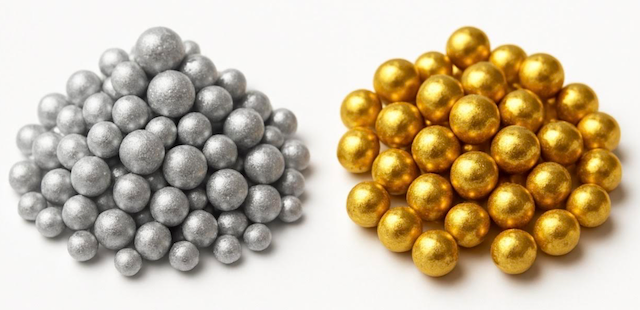
SDR and Supercritical CO2 Silver Nanoparticle Production
Spinning Disc Reactors, or SDRs, are a very new type of processing unit that has had new applications discovered every year.A big field of interest as of lately has been process intensification, which is a design approach that focuses on smaller, cleaner, safer, and more energy-efficient processes. One design that has received considerable attention has been the spinning disc reactor (SDR). Its basic design includes one or more liquid streams being flowed onto a quickly rotating disc.The centrifugal acceleration from the rotation creates a very thin liquid film which significantly heightens the mass transfer and micro-mixing ability of the liquid streams. It is also a continuous-feed reactor which can be applied to many processes that have relied on large-volume and high-residence-time designs like batch or continuously stirred tank reactors (CSTRs).When supercritical CO2 (sCO2) is introduced as a processing or antisolvent medium into this SDR platform, process intensification is taken a step further. Supercritical CO2 offers tunable solvent power, low viscosity, and excellent mass-transfer characteristics. Combined with the thin-film hydrodynamics of the SDR, sCO2 enables highly controlled nucleation and growth environments for nanoparticle production, while also simplifying downstream solvent removal and potentially reducing organic solvent usage.While the SDR can be used for many different processes, it excels greatly in a specific few. These include processes that rely on precipitation and uniformly mixed reactants. These traits allow for SDRs, especially when integrated with supercritical CO2 processing, to be used in the bottom-up production of nanoparticles, where particles are created through nucleation and subsequent crystal growth. This is where batch reactors and CSTRs are not as easily applied due to their high volumes and lack of sufficient mixing ability. Top-down processing, where bulk material is ground down into nanoparticles, is typically avoided when trying to achieve nanoparticles of a specific size and narrow size distribution due to the lack of control over the process.In 2010, the global market for quantum dots was low, sitting at $67 million [27]. It was projected to have an impressive 59.3 percent compound annual growth rate, which was mostly realized, and by 2016 it had become a $610 million global market (with the estimated CAGR it was predicted to reach $670 million by 2015) [28]. The current growth rate was then estimated at 41.3 percent for 2016 to 2021, predicting the global market to reach $3.4 billion by 2021 [28].Both silver and titanium dioxide nanoparticles have a realized and open market to enter, with predicted growth and new applications coming out consistently. The cost to produce the materials is rather low and the production ability seems high enough, especially with silver, that a company could actively pursue using an SDR–sCO2 platform to produce the nanoparticles with success. Since the proof of concept and idea is already detailed, there would be a relatively low cost of entry into these markets as well. The revenue from such activity could be used to support R&D into quantum dots or pharmaceutical nanoparticles.Strategy: Updated Silver Nanoparticle Economics with sCO2 Processing•(pricing updated to reflect a value of $45 per gram for silver nanoparticles)•Silver Nanoparticles Production at $45/gram Value:If silver nanoparticles of 99 percent purity or higher can be produced anywhere in the range of 10 nm to 40 nm, current specialty and high-value application markets support a value of approximately $45 per gram for these materials. Using an SDR integrated with supercritical CO2 processing, the objective is to continuously produce highly uniform nanoparticles with tight size distribution, which supports premium pricing in sectors such as antimicrobial coatings, advanced inks, electronics, and medical applications.In the earlier analysis, a conservative wholesale price of $2 per gram (later updated to $4 per gram) was assumed to undercut the market and facilitate entry. At that time, a production scenario on the order of 12 million grams (12,000 kg) per year was modeled, yielding approximately $24 million per year in revenue at $2 per gram and about $12 million per year in profit, corresponding to a modest 1.56 percent global market share at the time.With an updated value of $45 per gram, the same production capacity would correspond to dramatically higher revenue potential:• Annual production (example, unchanged from earlier modeling): • 12,000,000 grams per year• Updated value per gram (silver nanoparticles, 10–40 nm, ≥99 percent purity): • $45 per gram• Illustrative annual revenue at this value: • 12,000,000 g × $45/g = $540 million per yearEven if actual realized sales prices are discounted below $45 per gram to secure market entry or long-term contracts, the margin potential remains extremely attractive compared with the earlier $2–$4 per gram assumptions. The underlying production costs benefit from:• Continuous operation and high throughput of the SDR• Enhanced mass transfer and nucleation control from the thin-film hydrodynamics• Reduced solvent handling and potential simplification of purification by using supercritical CO2Assuming production costs remain close to those previously modeled, the move from a $2–$4 per gram pricing assumption to a $45 per gram value transforms the economics of an SDR–sCO2 silver nanoparticle facility from a niche opportunity into a potentially flagship revenue stream.In practical terms, this means:• A much shorter payback period for capital investment into SDR and supercritical CO2 processing hardware• The ability to fund more ambitious R&D into quantum dots, pharmaceutical nanoparticles, and other advanced materials using internal cash flow• The option to operate at a smaller market share (less tonnage) while still realizing strong revenues, thereby reducing production and market-entry riskReferencing the earlier market-share analysis, a producer operating at the previously modeled throughput would still hold roughly the same 1.56 percent share of the global silver nanoparticle market, but now leveraged against a higher per-gram value. As the market grows and new supercritical CO2–enabled applications come online, facilities based on SDR–sCO2 intensification are well positioned to scale capacity in modular steps and capture a larger share of this high-value segment.
